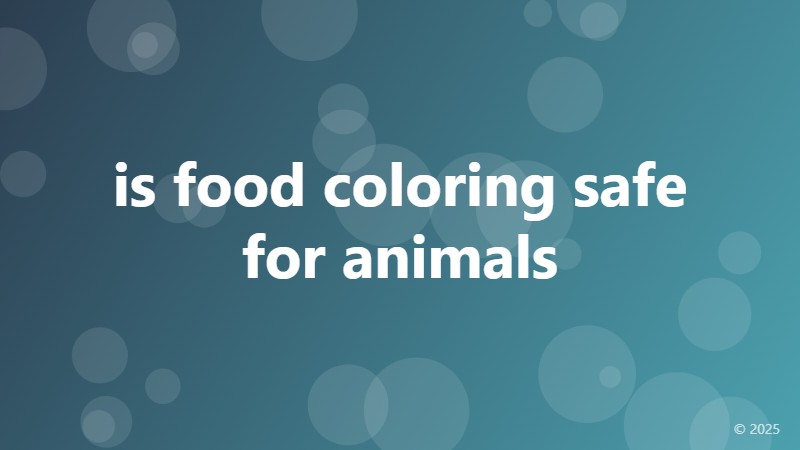is food coloring safe for animals

Understanding Food Coloring and Its Impact on Animal Health
As a responsible pet owner, you want to ensure that the food you provide for your furry friends is not only delicious but also safe for their consumption. With the rise of colorful pet food and treats, it's essential to ask the question: is food coloring safe for animals? In this article, we'll delve into the world of food coloring, its effects on animal health, and what you can do to ensure your pet's safety.
The Basics of Food Coloring
Food coloring, also known as artificial coloring or synthetic dyes, is a common ingredient used in human and animal food products. These colorants are designed to enhance the appearance and appeal of food, making it more attractive to consumers. There are several types of food coloring, including natural, artificial, and synthetic dyes. While natural colorants are derived from plants, artificial and synthetic dyes are created in a laboratory using chemical compounds.
The Risks Associated with Food Coloring for Animals
While food coloring may be safe for human consumption in moderation, the same cannot be said for animals. The risks associated with food coloring for animals are numerous and can have severe consequences on their health. Some of the potential risks include:
Allergic reactions and hypersensitivity: Some animals may be allergic to certain food colorants, leading to allergic reactions, skin irritation, and digestive issues.
Behavioral problems: Artificial colorants have been linked to hyperactivity, anxiety, and aggression in some animals.
Organ damage: Prolonged consumption of food coloring can lead to damage to vital organs such as the kidneys, liver, and heart.
Cancer risk: Some artificial colorants have been linked to an increased risk of cancer in animals.
Natural Alternatives to Food Coloring
If you're concerned about the safety of food coloring for your pet, there are natural alternatives available. Instead of opting for artificially colored pet food, consider the following options:
Natural colorants: Look for pet food products that use natural colorants derived from plants, such as turmeric, beetroot, or spirulina.
Single-ingredient treats: Opt for single-ingredient treats that are free from artificial additives, including food coloring.
Homemade pet food: Consider preparing homemade pet food using fresh, whole ingredients that are free from artificial colorants.
Conclusion
In conclusion, while food coloring may be safe for human consumption, it's essential to exercise caution when it comes to animal health. By understanding the risks associated with food coloring and opting for natural alternatives, you can ensure your pet's safety and well-being. Remember, always consult with your veterinarian before making any changes to your pet's diet.